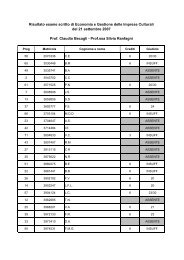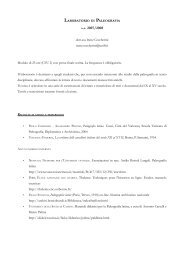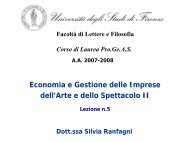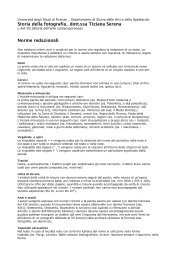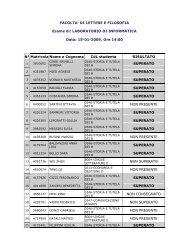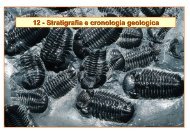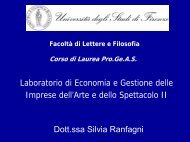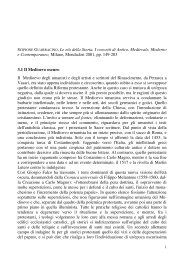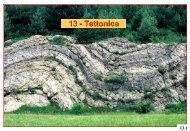Beyond Pragmatics. Morphosyntactic Development in Autism.pdf
Beyond Pragmatics. Morphosyntactic Development in Autism.pdf
Beyond Pragmatics. Morphosyntactic Development in Autism.pdf
You also want an ePaper? Increase the reach of your titles
YUMPU automatically turns print PDFs into web optimized ePapers that Google loves.
J <strong>Autism</strong> Dev Disord<br />
<strong>in</strong>itiate <strong>in</strong>teractions. Marg<strong>in</strong>ally significant group<br />
differences suggested that adults <strong>in</strong>teract<strong>in</strong>g with children<br />
<strong>in</strong> the autism group produced more expansions of<br />
their own utterances, and fewer replies to the children’s<br />
utterances. Adults may have been less likely to<br />
reply to children who produced more un<strong>in</strong>terpretable<br />
utterances, jargon, and echolalia. Overall, the adult<br />
discourse analysis suggests that adults <strong>in</strong>teracted similarly<br />
with children across groups, to the extent that we<br />
were able to measure differences.<br />
One limitation of the present f<strong>in</strong>d<strong>in</strong>gs draws on the<br />
dichotomy between competence and performance. An<br />
<strong>in</strong>dividual’s speech at any given moment (performance)<br />
may not be an accurate <strong>in</strong>dex of underly<strong>in</strong>g<br />
knowledge (competence) of the syntax of the<br />
language (Chomsky, 1957). The presence of speech<br />
errors <strong>in</strong> everyday speech (e.g., ‘‘a five pile car up’’)<br />
does not suggest that people have not mastered their<br />
syntax, but rather that there is ‘‘slippage’’ or noise <strong>in</strong><br />
the process of produc<strong>in</strong>g an utterance. This raises the<br />
possibility that children with autism may have a<br />
greater underly<strong>in</strong>g competence, or knowledge of the<br />
syntactic structures of English, but that they are less<br />
able or less will<strong>in</strong>g (e.g., because of deficits <strong>in</strong> social<br />
reciprocity) to access this knowledge <strong>in</strong> some contexts.<br />
For example, they could be less comfortable<br />
with a relatively unfamiliar experimenter, and thus be<br />
less likely to produce syntactically complex structures.<br />
In support of this hypothesis, children with autism<br />
performed as well as controls on a measure (the<br />
PPVT-III) that required non-verbal rather than spoken<br />
responses. By <strong>in</strong>clud<strong>in</strong>g other standardized measures<br />
of syntactic skills, it would have been possible to<br />
directly address this concern; however, to our<br />
knowledge, no standardized measures are appropriate<br />
for assess<strong>in</strong>g syntax at this very early stage of language<br />
acquisition. The CELF-Preschool, for example,<br />
which targets children ages 3–6, is often too difficult<br />
for children with autism of this age (e.g., Kjelgaard &<br />
Targer-Flusberg, 2001).<br />
There are, however, several sources of evidence<br />
aga<strong>in</strong>st the ‘‘performance deficit’’ as the sole explanation<br />
for syntactic delays <strong>in</strong> the autism group. First,<br />
children performed another non-verbal language task<br />
(not described here, Eigsti & Bennetto, 2001), and<br />
the autism group exhibited specific syntactic impairments<br />
on that task. Second, the children with autism<br />
were equally as talkative as their peers, and talked<br />
about similar topics. A third argument comes from<br />
the broader language acquisition literature. Seidenberg<br />
and MacDonald (1999) have suggested a performance-based<br />
alternative to Chomsky’s generative<br />
approach. In their probabilistic framework, language<br />
production and acquisition emerge as learners and<br />
talkers exploit multiple probabilistic constra<strong>in</strong>ts<br />
drawn from both l<strong>in</strong>guistic and nonl<strong>in</strong>guistic <strong>in</strong>formation.<br />
Under this framework, production data<br />
observed <strong>in</strong> the course of language acquisition are<br />
<strong>in</strong>formative about how children extract the underly<strong>in</strong>g<br />
regularities of the language system. This<br />
approach suggests that the less complex syntax<br />
observed <strong>in</strong> language of children with autism may<br />
reflect actual delays <strong>in</strong> their knowledge, rather than<br />
‘‘performance factors.’’<br />
The present data, which were collected from a s<strong>in</strong>gle<br />
play session, present a further limitation. The children<br />
with autism were somewhat acclimated to the exam<strong>in</strong>er<br />
and the physical environment of the play-room,<br />
because the play session was recorded dur<strong>in</strong>g their<br />
second visit to the lab. Nonetheless, children with<br />
autism may have greater difficulty adjust<strong>in</strong>g to this still<br />
relatively novel situation. This play session may have<br />
thus elicited somewhat less complex or typical spontaneous<br />
language from this group of children. Future<br />
studies may address this concern by perform<strong>in</strong>g a more<br />
extended familiarization procedure or, alternatively,<br />
by document<strong>in</strong>g children’s speech and language <strong>in</strong><br />
the home sett<strong>in</strong>g, where they are likely to be most<br />
comfortable.<br />
One issue that must be raised <strong>in</strong> consider<strong>in</strong>g how<br />
generalizable the study’s f<strong>in</strong>d<strong>in</strong>gs may be is whether<br />
the participants are characteristic of the autism population.<br />
The ASD group was comprised solely of<br />
high-function<strong>in</strong>g children with autism, not other<br />
diagnoses such as PDD/NOS or Asperger syndrome.<br />
The children all had a history of language delay, as is<br />
characteristic of autism, but were all verbal at the<br />
time of the study; <strong>in</strong>clusion criteria required that<br />
participants have at least 2-word phrases <strong>in</strong> their<br />
speech at home. Certa<strong>in</strong>ly, given the wide spectrum<br />
of abilities <strong>in</strong> autism, it may be the case that the<br />
syntactic deficits identified here may be less apparent<br />
<strong>in</strong> a sample of children with diagnoses other than<br />
classic autism, or <strong>in</strong> a sample of children with a wider<br />
range of developmental abilities. In addition, some<br />
research suggests the presence of several dist<strong>in</strong>ct<br />
subtypes of children with ASD, where one subgroup<br />
has deficits that parallel those observed <strong>in</strong> children<br />
with specific language impairment (SLI), whereas<br />
other subgroups exhibit few morphosyntactic delays<br />
(Kjelgaard & Tager-Flusberg, 2001). Analyses exam<strong>in</strong><strong>in</strong>g<br />
the possibility that participants <strong>in</strong> the autism<br />
group could be best characterized by normal and<br />
language-impaired subgroups were not consistent<br />
with these previous f<strong>in</strong>d<strong>in</strong>gs. Instead, the data <strong>in</strong>dicated<br />
a rather consistent morphosyntactic deficit<br />
123


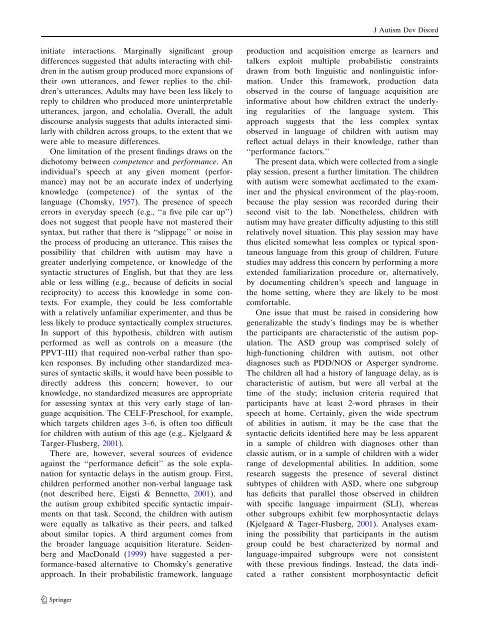
![PATROLOGIA GRECA E LATINA [Patrologiae cursus completus]. All ...](https://img.yumpu.com/50711133/1/184x260/patrologia-greca-e-latina-patrologiae-cursus-completus-all-.jpg?quality=85)
